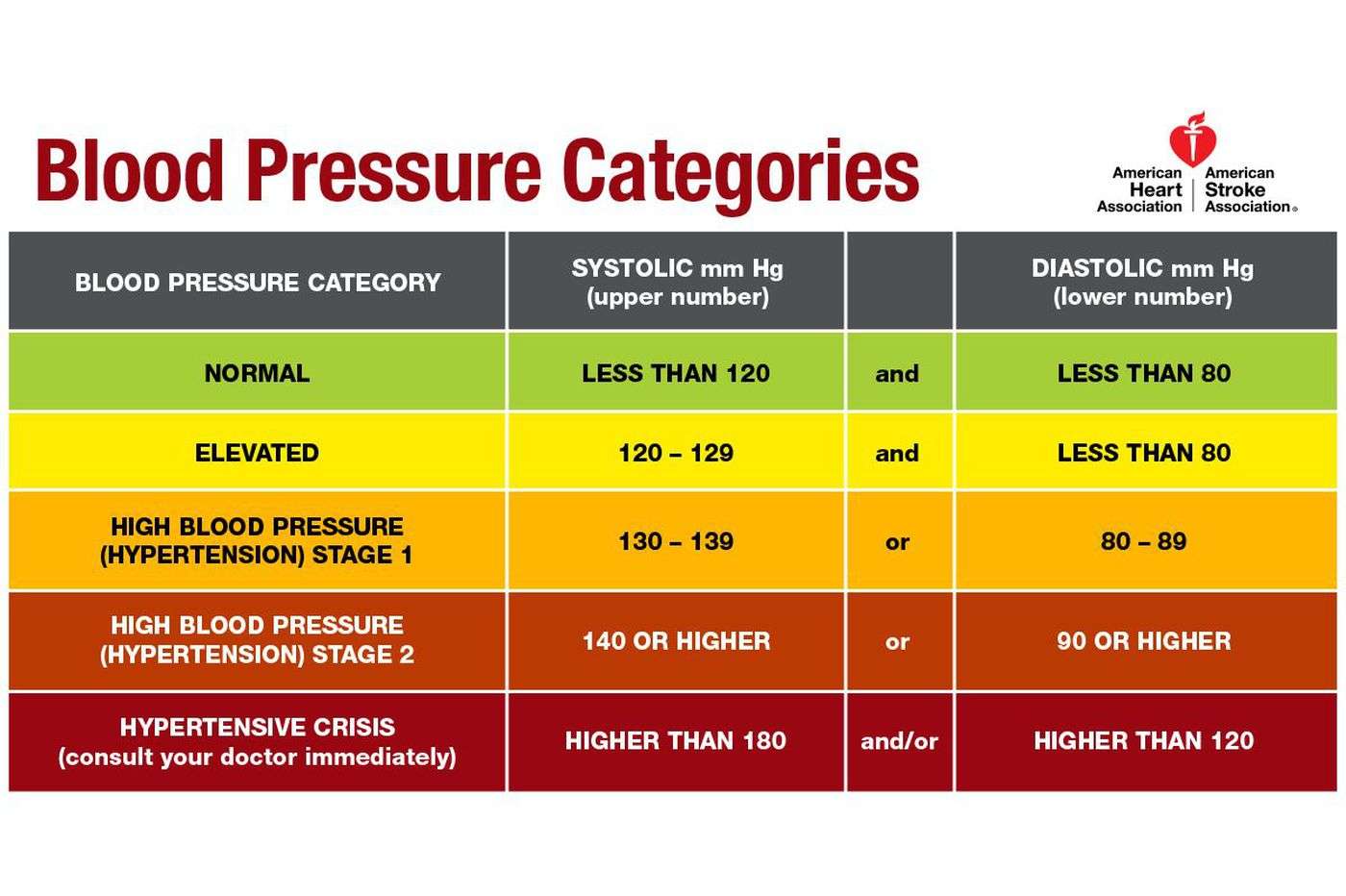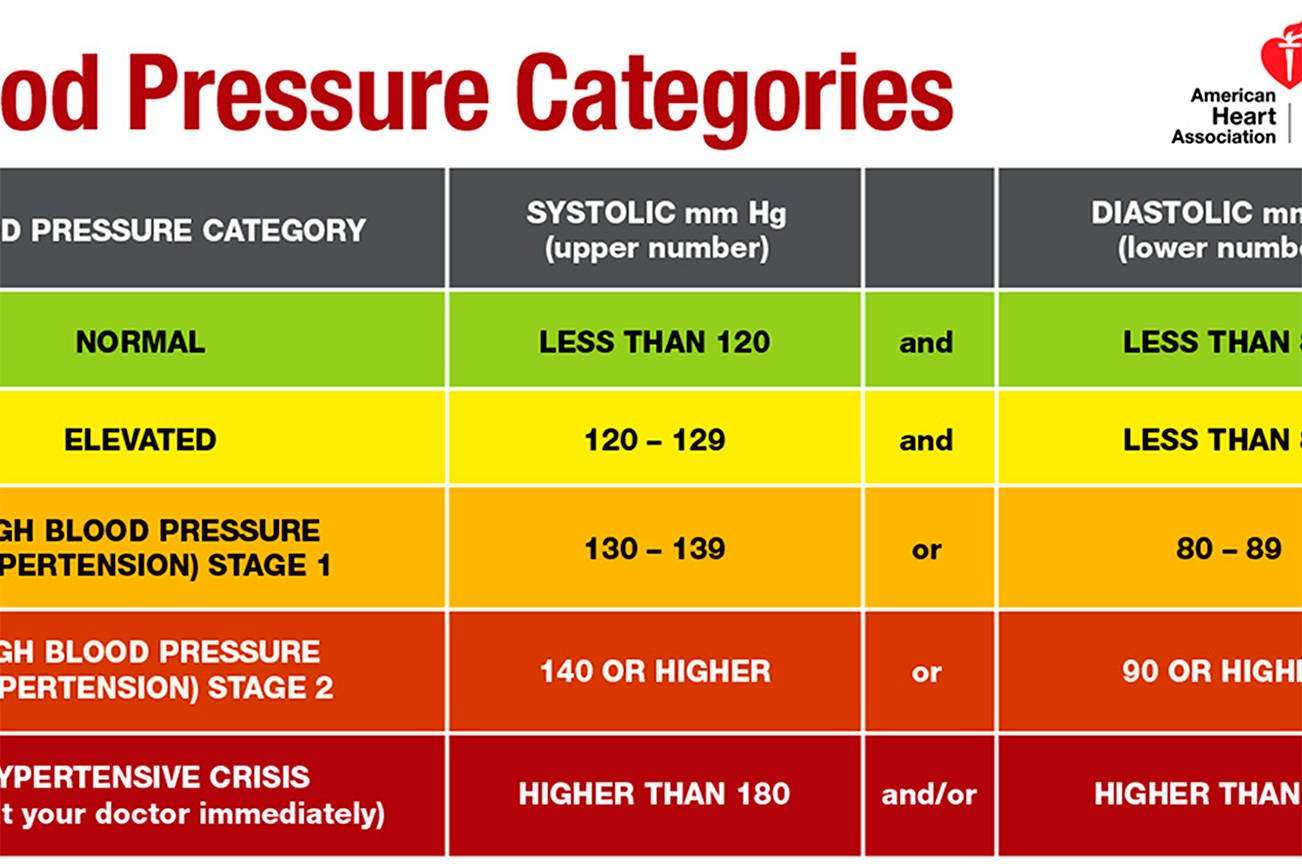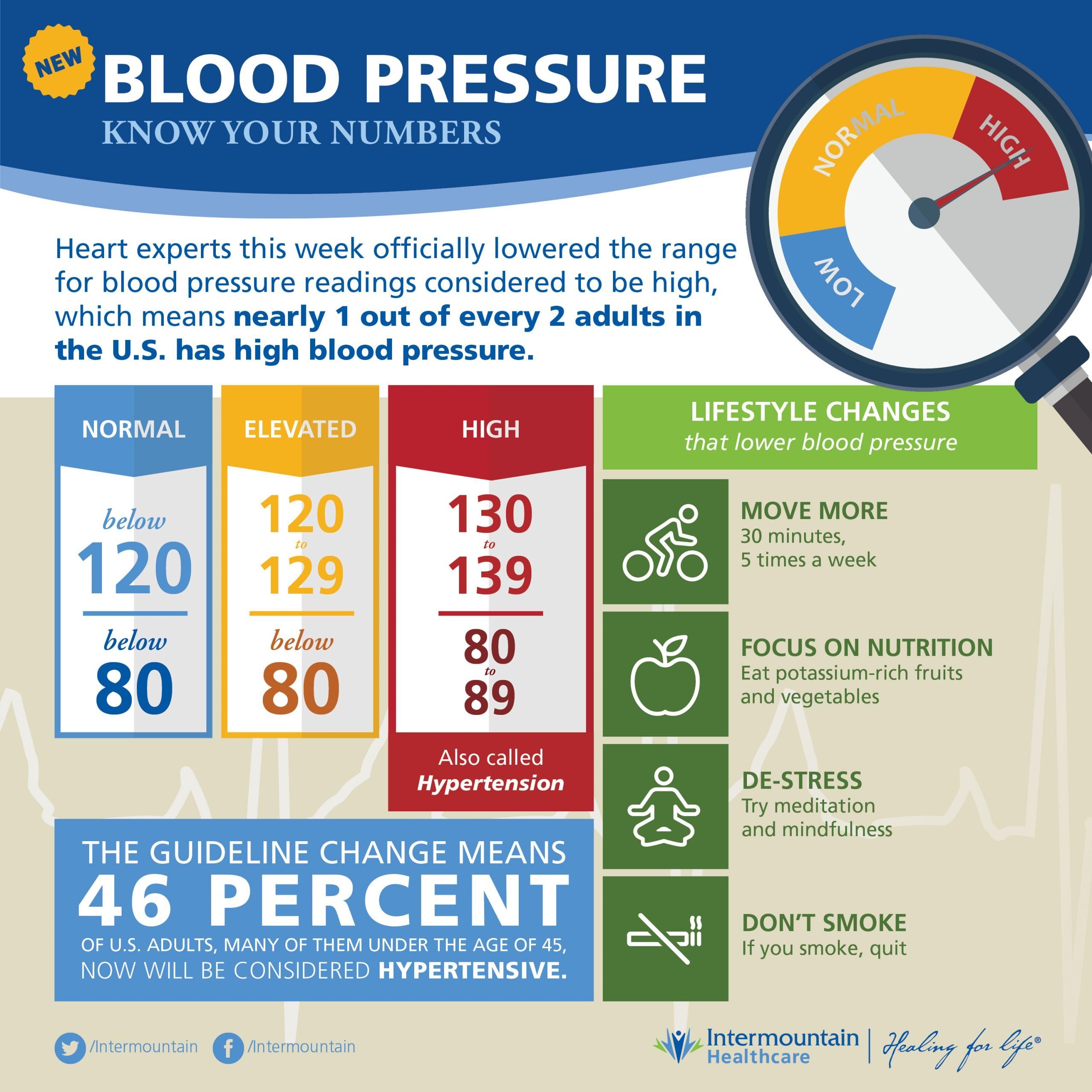Drink Alcohol In Moderation
Drinking excessive amounts of alcohol will increase your blood pressure and raise the cholesterol levels in your blood.
Sticking to the recommended amounts of alcohol consumption is the best way to reduce your risk of developing high blood pressure.
The recommended daily limits of alcohol consumption are:
- 3 to 4 units of alcohol for men
- 2 to 3 units of alcohol for women.
A unit of alcohol is equal to about half a pint of normal-strength lager, a small glass of wine or a pub measure or spirits.
More about drinking alcohol reponsibly
Home Blood Pressure Testing
Blood pressure tests can also be carried out at home using your own blood pressure monitor.
Like 24-hour or ambulatory monitoring, this can give a better reflection of your blood pressure.
It can also allow you to monitor your condition more easily in the long term.
You can buy a variety of low-cost monitors so you can test your blood pressure at home or while you’re out and about.
Measure your blood pressure twice a day, ideally in the morning and the evening, while you’re sitting down.
Each time take 2 readings, 1 minute apart. Continue to measure your blood pressure twice a day for 7 days.
Your doctor or nurse will use this information to work out your average blood pressure.
It’s important to make sure you use equipment that’s been properly tested.
The British Hypertension Society has information about validated blood pressure monitors that are available to buy.
How Often Should You Get Your Blood Pressure Checked
If your blood pressure is higher than it should be, follow your doctors advice with regard to how often you should check your blood pressure at home. Also find out from your doctor what you should do if your blood pressure readings are higher than usual.
If you dont have high blood pressure, its still important to get it checked regularly, as blood pressure can change over time. Medical experts suggest the following timeline for low risk individuals:
- For people between 18 and 40. Get your blood pressure checked at least once every 2 years.
- For anyone over 40. Get your blood pressure checked at least once a year.
You may need to have your blood pressure checked more regularly if you:
- have a family history of hypertension
- have heart disease, diabetes, or kidney disease
- are overweight or have obesity
- have sleep apnea or insomnia
- smoke
You dont necessarily have to get your blood pressure checked at your doctors office. Some health care clinics do free blood pressure screenings. You may also schedule an appointment at your local pharmacy.
Untreated and uncontrolled high blood pressure can damage your blood vessels and other organs, including your heart, kidneys, eyes, and brain.
Complications of hypertension can include:
Read Also: How Does Alcohol Increase Blood Pressure Mechanism
Whats Considered High Blood Pressure In Pregnant People
High blood pressure can also occur during pregnancy. According to the , about 8 percent of people develop some form of hypertension while pregnant.
- Normal blood pressure during pregnancy is less than 120 mm Hg systolic and less than 80 mm Hg diastolic.
- Readings higher than 140 mm Hg systolic or 90 mm Hg diastolic are considered high.
There are two main categories of high blood pressure in pregnancy:
- Chronic hypertension. This is when blood pressure is high before you become pregnant or when high blood pressure develops before 20 weeks of pregnancy.
- Hypertensive disorders of pregnancy. These types of high blood pressure problems are specific to pregnant people and typically develop after 20 weeks of pregnancy. These blood pressure issues typically disappear after you give birth.
Your doctor may prescribe medications if you have high blood pressure during pregnancy.
How Can I Be More Active

- Check first with your healthcare provider before increasing your physical activity. Ask your provider what type and amount of exercise is right for you.
- Choose aerobic activities such as walking, biking or swimming.
- Start slowly and increase activity gradually. Aim for a regular routine of activity five times a week for 30 to 45 minutes each session.
Recommended Reading: Claritin And High Blood Pressure
How Can I Control My Blood Pressure
You can often lower your blood pressure by changing your day-to-day habits and by taking medication if needed. Treatment, especially if you have other medical conditions such as diabetes, requires ongoing evaluation and discussions with your doctor.
Lifestyle changes you can make to help prevent and lower high blood pressure:
In addition to recommending lifestyle changes, your doctor will likely prescribe medication to lower your blood pressure to a safe level. Isolated systolic hypertension, the most common form of high blood pressure in older adults, is treated in the same way as regular high blood pressure but may require more than one type of blood pressure medication. You may try several kinds or combinations of medications before finding a plan that works best for you. Medication can control your blood pressure, but it can’t cure it. If your doctor starts you on medication for high blood pressure, you may need to take it long-term.
Lower Your Blood Pressure Reading With Easy Hand Exercise That’s ‘better Than Meds’
High blood pressure is a serious condition that requires careful vigilance to keep it in check. One simple exercise has been shown to lower your reading – and may be just as powerful as medication
Having a firm hand grip says a lot about a person and can often make a strong first impression.
But turns out having strength in your hands does more than just portray a macho image and could help with both men and woman suffering with high blood pressure.
High blood pressure is a common condition and can be the precursor for serious and potentially life-threatening conditions such as heart attacks or stroke.
How can hand exercises help to lower your reading?
High blood pressure, sometimes referred to as hypertension, increases a persons risk of having a stroke and usually increases as a problem with age.
Typical treatment and recommendations for those suffering with hypertension includes certain drugs such as beta blockers and a change in diet.
Exercise is also vital and in fact, for many years, doctors have known that increasing your strength in your hands could work just as well as medication.
This is where handgrip strength training comes in and could help reduce the dangers associated with high blood pressure.
Hand grips work aggressively on making your finger, palm and wrist muscles stronger.
In an isometric contraction, the muscle is engaged, but its not changing size.
Read Also: Claritin And Blood Pressure
Low Blood Pressure Also Known As Hypotension Is When You Have A Blood Pressure Level That Is Below The Normal Range
If your blood pressure is naturally low, this probably wont cause you any problems and wont need treating. In fact, the lower your blood pressure, the lower your risk of heart disease and stroke.
Low blood pressure can sometimes be caused by medications or can be a sign of another health problem. This can sometimes cause problems such as falls, fainting and feeling dizzy, so it might need looking into and treating. Speak to your doctor or nurse if youre worried about low blood pressure.
Plus, take a look at the animation below on how to manage low blood pressure when you stand up.
High Blood Pressure In Older People
The target blood pressure reading for the over-80s is below 150/90 mmHg when it’s measured in the clinic or surgery, and below 145/85 mmHg for home readings.
While there are definite benefits from taking medicines to reduce blood pressure if you’re under the age of 80, it’s less clear it’s useful if you’re over 80.
It’s now thought that if you reach 80 while you’re taking medicine for high blood pressure, it’s fine to continue treatment provided it’s still helping you and is not causing side effects.
If you’re diagnosed with high blood pressure and you’re aged over 80, your doctor will also consider your other health risk factors when deciding whether to give you treatment for the high blood pressure.
Page last reviewed: 23 October 2019 Next review due: 23 October 2022
Read Also: Low To Lower Blood Pressure
How To Properly Interpret Blood Pressure Levels
Because blood pressure is different for every person, there are no specific limits except for excessively high blood pressure values for when it is advisable to see a doctor. However, if the levels rise excessively or the person has symptoms such as shortness of breath, sensations of pressure in the chest, dizziness, or nausea, they should seek medical attention immediately.
You May Like: Does Claritin D Raise Blood Pressure
What About Blood Pressure Thats Too Low
Low blood pressure is known as hypotension. In adults, a blood pressure reading of 90/60 mm Hg or below is often considered hypotension.
Hypotension can be dangerous because blood pressure thats too low doesnt supply your body and heart with enough oxygenated blood.
Some potential causes of hypotension can include:
- heart problems
Recommended Reading: Can Claritin Raise Blood Pressure
What Are The Symptoms Of High Blood Pressure
Most people who have high blood pressure do not have symptoms. This is why its sometimes called the silent killer. It is very important to have your blood pressure checked regularly.
Some people experience headaches, nosebleeds, or shortness of breath with high blood pressure. However, those symptoms can mimic many other things . Usually, these symptoms occur once blood pressure has reached a dangerously high level over a period of time.
What Should Your Blood Pressure Be

Ideally, we should all have a blood pressure reading between 90/60mmHg and 120/80mmHg.
Most people in the UK have blood pressures higher than the ideal, but below the usual cut-off for diagnosing high blood pressure somewhere between 120/80mmHg and 140/90mmHg. If youre in this range, you could develop high blood pressure in the future. Taking steps to will keep your risk of health problems down.
Recommended Reading: Claritin Side Effects Blood Pressure
Understanding The Acc/aha Definition
It’s important to mention that the definition of high blood pressure according to the ACC/AHA defers slightly from other professional societies, such as the European Society of Cardiology and the European Society of Hypertension .
The ESC/ESH defines high blood pressure as a systolic blood pressure that is 140 mmHg or higher or a diastolic blood pressure that is greater than 90 mmHg.
The differences in definition are based on results from large studies that examined the link between blood pressure and the occurrence of heart attacks and strokes.
Who Should Have A Blood Pressure Check
All adults should have their blood pressure checked. Blood pressure becomes more common with age, so if youre over 40 you should have a blood pressure check at least every five years. Its a good idea to have a blood pressure check if you are younger as well, especially if you are carrying extra weight or have other .
Don’t Miss: What Causes Change In Blood Pressure
High Blood Pressure And Daily Activity
Check with your doctor before starting a new activity or increasing your level or intensity. Be active safely. Build up your levels of activity gradually.
Try to do at least 30 to 45 minutes of moderate-intensity physical activity on most, if not all, days of the week. This can be done in bouts of 10 minutes or longer, if that is more convenient.
Physical activity is any form of bodily movement performed by our large muscle groups. Moderate-intensity physical activity , such as brisk walking or cycling, is enough to provide health benefits.
Walking is a great activity for all ages. You may like to join one of the Heart Foundations community walking groups.
Some types of exercises, such as body presses and lifting heavy weights, can raise your blood pressure. Avoid these if you have high blood pressure.
Low diastolic blood pressure is when blood pressure between heartbeats is lower than it should be. Blood pressure is the force that blood exerts against the arteries as the heart pumps it around the body.
This article will take a closer look at low diastolic blood pressure, including its causes, symptoms, and treatments.
Blood pressure readings use two numbers recorded in millimeters of mercury . The two numbers measure:
Systolic blood pressure: This is the top number, and is the higher of the two. It measures how much pressure the blood applies to the artery walls when the heart beats.
Complications Of High Blood Pressure
Untreated or poorly managed high blood pressure can cause serious and even life threatening issues. It can damage your blood vessels as well as your organs. The longer your hypertension goes untreated, the more it can damage your body and affect your health.
Potential complications of high blood pressure include:
Also Check: Can You Take Claritin With High Blood Pressure
Treating High Blood Pressure With Lifestyle Changes
Your doctor may suggest that you make one or more of the following changes:
- Lose weight. If you’re overweight, losing extra kilograms may bring your blood pressure down.
- Get more active. Regular aerobic exercise can help lower blood pressure.
- Stop smoking. Smoking increases your risk for heart attack and stroke.
- Cut back on drinking. Limit alcohol to 2 drinks a day and no more than 14 drinks a week for men and 9 drinks a week for women.
- Eat less sodium. To help lower blood pressure, try to eat less than 2,000 mg a day.footnote 3
- Follow theDASH diet. The DASH eating plan can help you lower your blood pressure.
For tips on how to do these things, see the Living With High Blood Pressure section of this topic.
|
One Woman’s Story: Izzy, 60 “I could never have imagined I could get down so low by losing weight. I feel sure it was the WAY I lost weight, with DASH.” Izzy |
Prevention And Management Of Low Diastolic Blood Pressure
There are some things you can do to help prevent and manage low diastolic pressure:
- Try to keep your salt intake to between 1.5 and 4 grams per day. An ideal number is about 3.5 grams. Read food labels to avoid added salt in your diet.
- Eat a heart-healthy diet. This diet includes plenty of fruits, vegetables, and whole grains. For protein, stick to lean meats and fish. Avoid fatty foods.
- Drink enough fluids and avoid alcohol, which can increase your risk of dehydration.
- Stay physically active and start an exercise program. Ask your doctor what type and amount of exercise is safe for you.
- Maintain a moderate weight. If youre overweight, your doctor can help you create a safe weight loss plan.
- If you smoke, quit. Quitting can be difficult, so consider reaching out for support.
Recommended Reading: Symptom Of High Blood Pressure
This Is High Blood Pressure
When your heart beats, it pumps blood around your body to give it the energy and oxygen it needs. As the blood moves, it pushes against the sides of the blood vessels. The strength of this pushing is your blood pressure. If your blood pressure is too high, it puts extra strain on your heart and blood vessels. This is called high blood pressure, or hypertension. Over time it can lead to a number of health problems including heart attacks, stroke, kidney disease and some forms of dementia. The good news is there are lots of things you can do to .
High blood pressure is very common, about a third of adults in the UK have it, but many arent aware of it. It doesnt usually have any symptoms so the only way to know you have it is to have a .
What Do The Readings Mean

As a general guide:
140/90mmHg or over you may have high blood pressureMost doctors use 140/90mmHg as the cut off for point for diagnosing . This is the point where your risk of serious health problems goes up. They might prescribe and advise you to make changes to your to bring your blood pressure down. 120/80mmHg up to 140/90mmHg pre-high blood pressureAlso called high-normal blood pressure. This is not high blood pressure, but it is a little higher than it should be and means you could go on to develop high blood pressure. See how you can make to lower it. 90/60mmHg up to 120/80mmHg ideal blood pressureAlso called normal blood pressure. Your blood pressure reading is healthy. At this level you have a much lower risk of heart disease and stroke. Following a will help you to keep it in the healthy range. 90/60mmHg or lower you may have low blood pressure usually isnt a problem, but it can sometimes make you feel faint or dizzy or could be a sign of another health problem.
The video below explains how your blood pressure numbers are linked to the risk of stroke and other disease.
You May Like: High Blood Pressure Shaky
Regular Blood Pressure Checks For Over Over 40’s
The only way to find out whether you have high blood pressure is to have your blood pressure checked regularly. Ask your GP when you are next due for yours to be checked.
Blood pressure checks are usually available on request at most GP surgeries and health clinics. Some surgeries have home monitoring devices available, which you may be able to use at the time of blood pressure medication start up or change. Many also have a policy of arranging regular checks for you.
Adults who are over 40 and have not been diagnosed with high blood pressure should have their blood pressure checked at least once every five years. However, your blood pressure should ideally be checked more frequently, particularly if you have any contributory risk factors.